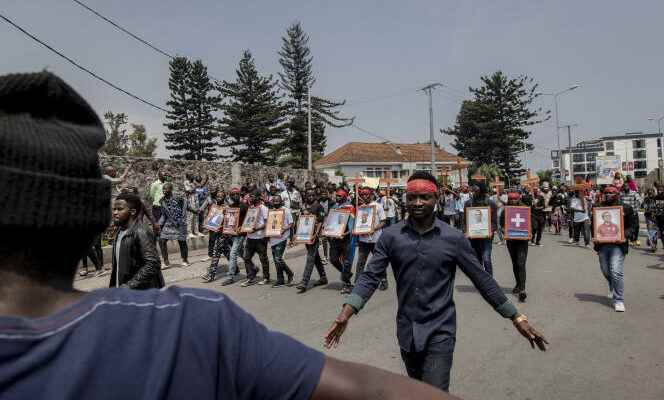To not miss any African news, subscribe to the newsletter of the “World Africa” from this link. Every Saturday at 6 a.m., find a week of news and debates covered by the editorial staff of the “World Africa”.
The arrival of a handful of white Jeeps with the “UN” logo made two men jump, leaning against the only shop in the village of Kiliba. For several months, Pakistani peacekeepers have not been welcome in this area. of South Kivu, a province in the east of the Democratic Republic of Congo (DRC). They are summoned to leave the premises waving their arms. The words fuse in Swahili, the language spoken by the local communities.
On the other side of the crossroads, the soldiers of the patrol, equipped with bullet-proof vests and submachine guns, are silent in the face of the villagers who stare at them. No interpreter accompanies them. Apart from a few officers who can speak English, most of these men speak only Urdu, the national language of Pakistan. A linguistic gap that does not help in a context of growing mistrust vis-à-vis the soldiers of the UN Mission for Stabilization in the DRC (Monusco).
Some of the inhabitants of the east of the country reproach them for their ineffectiveness in the face of the multitude of armed bands which destabilize the region. The Pakistani contingent, about 3,000 men present in South Kivu for more than ten years, has just had the bitter experience of this. One of them was killed on the night of September 30 during an attack carried out, according to the Congolese army, by the Twirwaneho, a local militia, against the Minembwe camp.
Since the arrival of the UN force in 1999, the number of armed groups has not diminished. The Kivu Security Tracker, an organization that tracks violence in the area, had more than 120 two years ago.
“It is the armed groups that make the law”
“If the blue helmets are not able to put them out of harm’s way, then they must leave”, launches André Byadunia, one of the instigators of the “dead city” day of October 4 in Uvira, the second city of South Kivu, located on the shores of Lake Tanganyika. An initiative to denounce the “shortcomings” of Monusco and which adds to a series of citizen actions and demonstrations organized in recent months against the “soldiers of peace”.
Since the end of July, at least 36 people have died during demonstrations against Monusco
At the end of July, four people died electrocuted during a spontaneous rally in front of the Monusco facilities in Uvira: warning shots supposed to disperse the demonstrators would have knocked down electrical wires. “Here, we can still circulatehowever, indicates a UN civilian official who wishes to remain anonymous. Elsewhere, some United Nations movements are on stand-by. » In the neighboring province of North Kivu, several convoys were attacked and bases were looted. In total, since the end of July, at least 36 people have died and 170 others injured during demonstrations against Monusco.
You have 52.88% of this article left to read. The following is for subscribers only.
